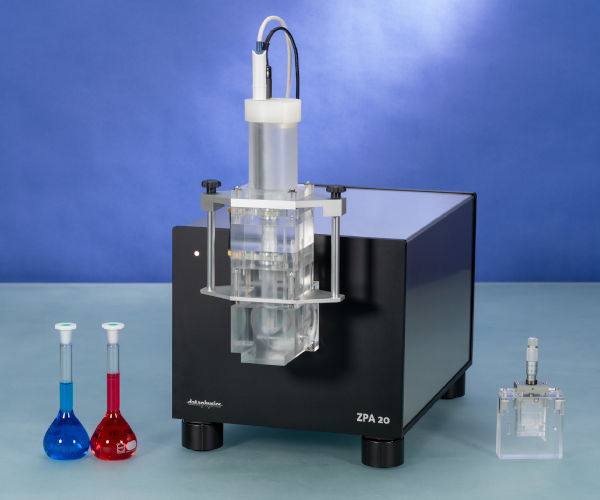REQUEST A QUOTE / ENQUIRY FORM
- • Based on patented bidirectional oscillating streaming potential approach
- • Oscillation frequencies of up to 0.5 Hz with use of high performance stepper-motor device
- • Measuring probes for current, voltage, pressure, conductivity, pH value and temperature are possible
- • Fast measurement time typically under 1 min for a single zeta potential test
- • For automated different pH measurements, optional liquid dosing unit can be added on
- • Different measuring cells for powders, fibres, plate shaped solid samples & granulate materials available for diverse sample types
Food technology
Filtration membranes
Biocompatible material
Textile industry
- • membrane filtration: characterisation and quality control of membranes for selective fractionation.
- • particle interaction in food formulations: study of stability and interaction depending on the pH value.particle interaction in food formulations: study of stability and interaction depending on the pH value.
- • antimicrobial surfaces: optimisation of surfaces used in food packaging and food processing for preventing the adsorption of microorganisms.
Filtration membranes
- • virus filtration: modification of the surface charge of filter media for improving performance in filtering water from viruses.
- • seawater salt removal: study of interaction between seawater components and filtration membranes by time dependent ζ potential analysis.
- • membrane fouling: fouling processes can be identified by time dependent ζ potential analysis in order to increase the membrane efficiency.
Biocompatible material
- • dental implants: investigation of adsorption of proteins on the implants surface in order to characterise the formation of biofilms.
- • tissue engineering: modification of polymer surfaces to improve cytoadhering.
- • dialysis membranes: modification of the filtration fibres to increase biocompatibility.
- • contact lenses: reduction of biofilms and adhesion of bacteria on the lens surface as well as study of long-term stability and biocompatibility.
Textile industry
- textile washing: determination of the interfacial kinetic between surface active agents and textile materials
